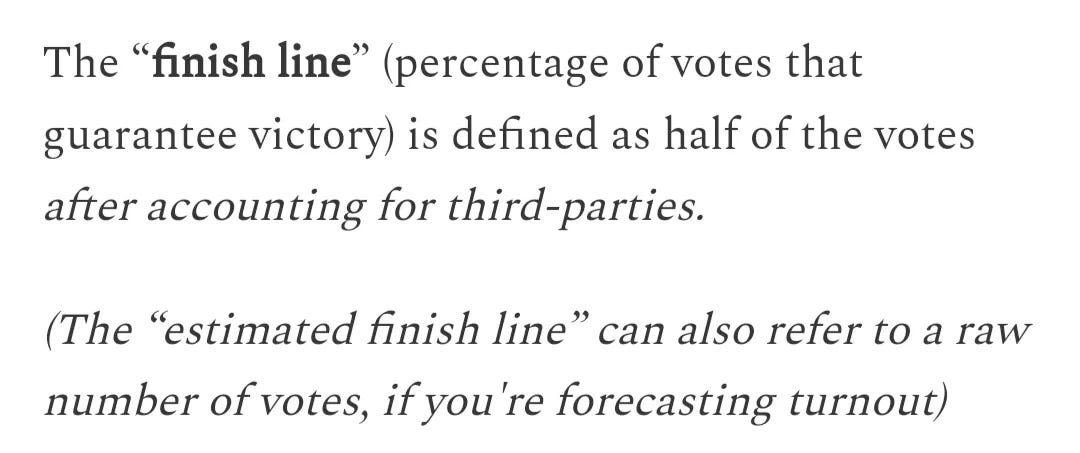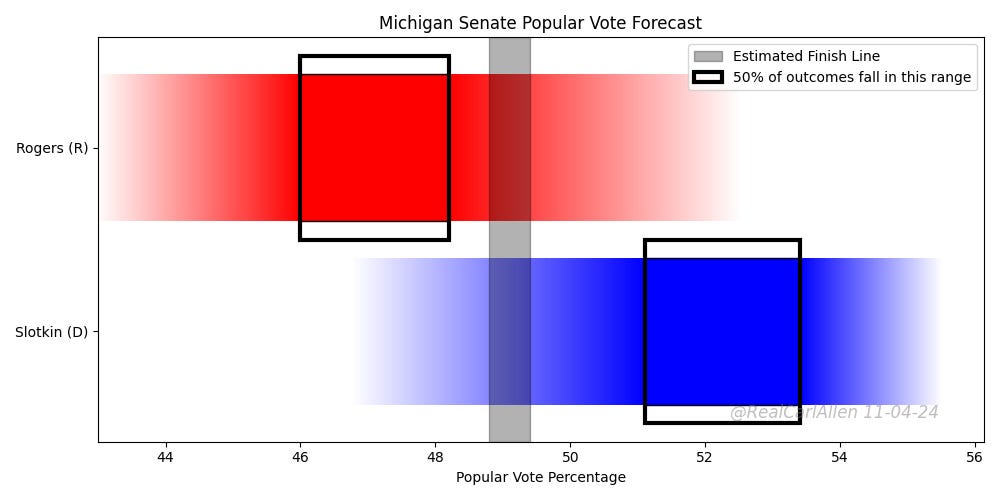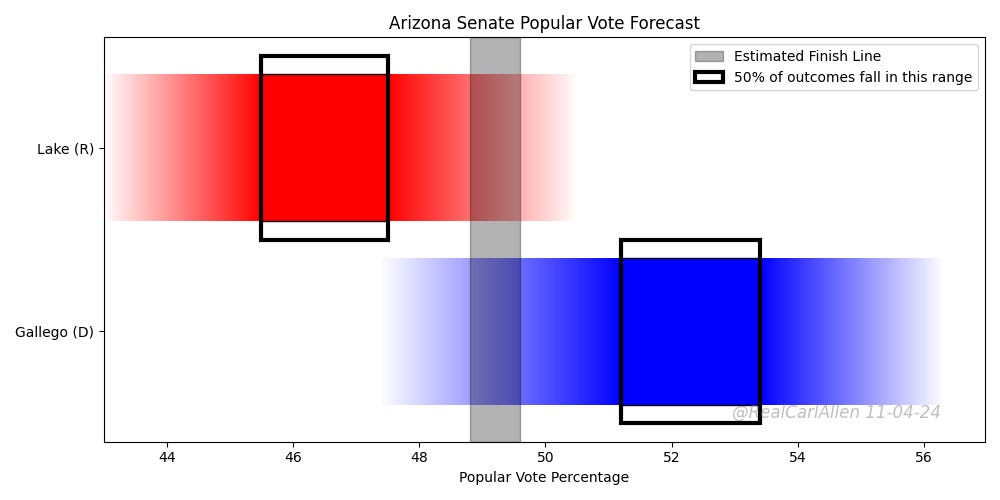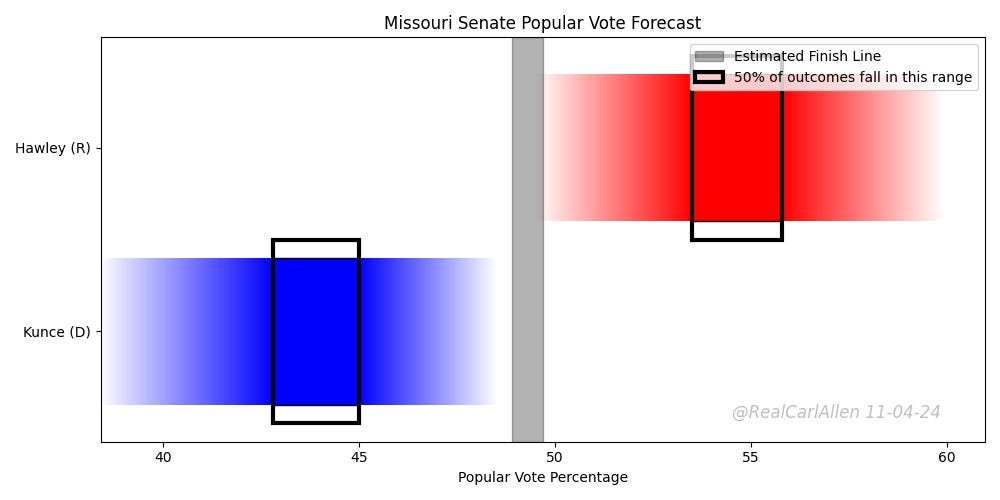See my previous Senate Forecast here (with links to the ones before that)
The path for Democrats to hold the Senate has faded, but it's far from gone. Ohio remains central to their chances (it is a tossup) and the 50th seat, on a good night for Dems, could be any of Texas, Montana, Florida, or Nebraska.
Most likely, in my calculation, it's Nebraska (just over 30% win probability).
The truth is, Nebraska is hard to forecast for reasons I talk about here but I believe a forecast with Osborn at 6% is ignoring some unique dynamics in that race - and not supported by what little poll data we do have. Fischer by 10 (FiveThirtyEight’s median forecast) is far off mine (Fischer by 5).
Interestingly, not all scenarios with Democrats holding the Senate require Ohio…and Democrats could win, say, Texas and/or Nebraska but not Ohio…but that would make for a weird night.
The most likely scenario remains that Ohio determines whether Democrats have 48 or 49 Senate seats. Combined, those outcomes have about a 50% probability, if you believe my forecast.
My forecast assumes Osborn would caucus with Dems.
Range of Outcomes
Republicans, if they have a good night, would easily flip MT and OH, and have chances in PA, MI, WI…with their sights on NV and AZ, though those two would be harder.
For Democrats, their chances in Texas, Montana, and Florida have gradually faded as the Republican poll averages approach or exceed 49% in each. Montana, despite there being a Democratic incumbent, could be the hardest of the three longshots.
Forecast comparison
RealCarlAllen: 29% chance Dems hold Senate
FiveThirtyEight: 8% chance Dems hold Senate
For consistency's sake, I have compared my forecasts to the same forecasters (Morris and Silver) I had in the past. Silver oddly opted not to do a Senate or House forecast this year. Might have to do something different in the future.
State Win Probabilities
Popular Vote by State
The “finish line” can be expressed two different ways.
In the popular vote forecasts below, I have estimated the finish line.
Here they are in approximate order from most competitive to least competitive. See notes from previous Senate forecasts for explanations regarding range of outcome probabilities.






















Does the Des Moines Register/Selzer poll provide any insights that can be applied to the Nebraska senate race?